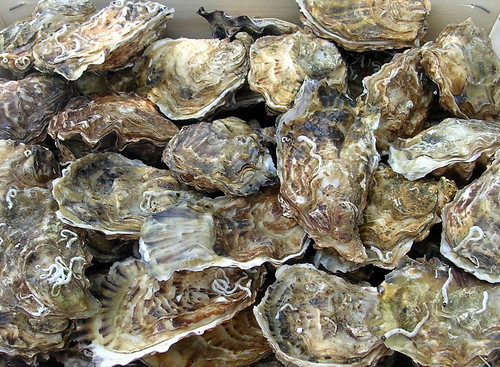Enjoy those wild oysters while you still can: just in from the American Institute of Biological Sciences,
The overall condition of native oyster reefs is poor in most of the 144 bays in 40 ecoregions we evaluated. Although individual oysters are still present in most places, records of historical (past 20 to approximately 130 years) and recent abundances show that many reefs that were once common are now rare or extinct as ecosystems. Oyster reefs are at less than 10% of their prior abundance in most bays (70%) and ecoregions (63%). They are functionally extinct—in that they lack any significant ecosystem role and remain at less than 1% of prior abundances in many bays (37%) and ecoregions (28%)—particularly in North America, Australia, and Europe. Very few bays and ecoregions are rated as being in good condition (> 50% of reefs remaining). Our results most likely underestimate losses because of the lack of historical abundance records, which particularly affects assessments in South America, temperate Asia, and South Africa.
They go on to say that their estimates are conservative. The report also manages a shout out to Georges Bay, Tasmania, the last home of wild ostrea angasi, which was recently opened for harvesting.
